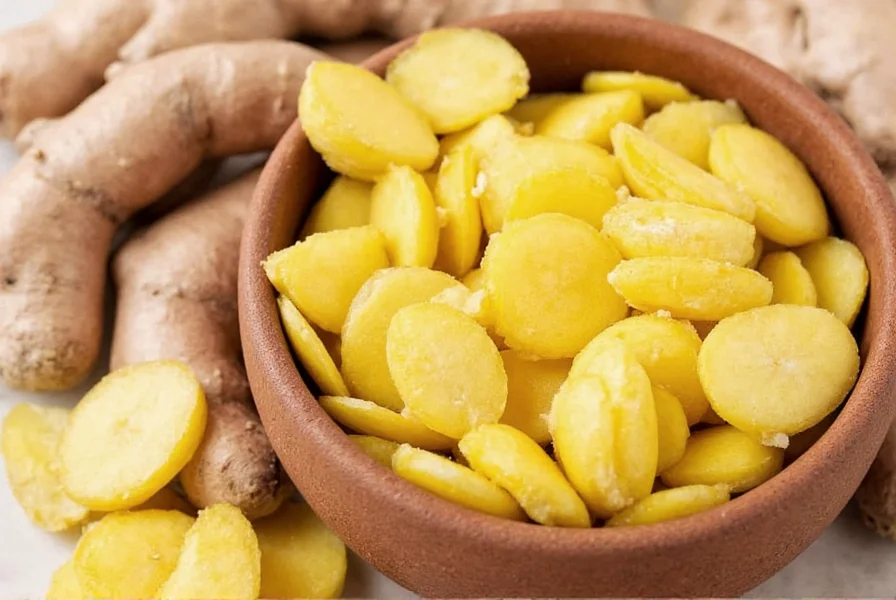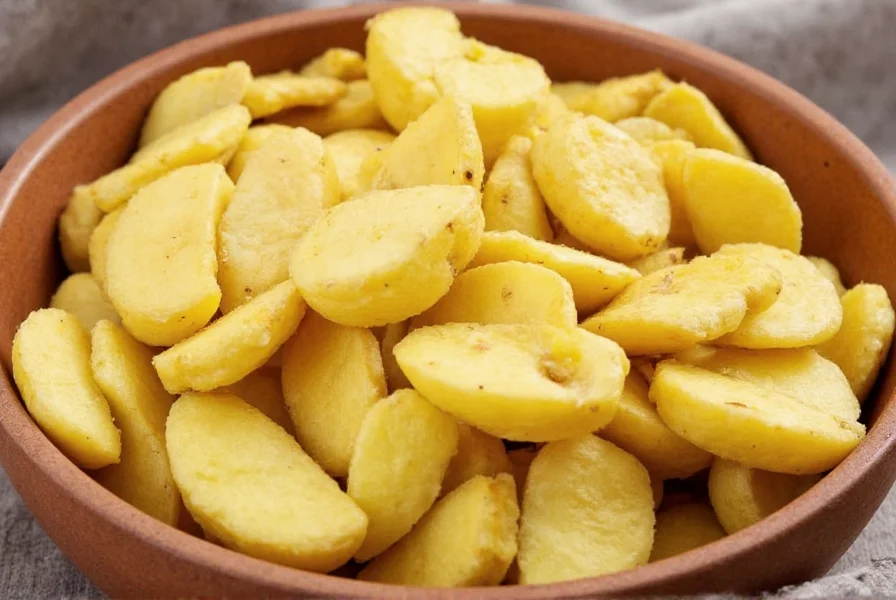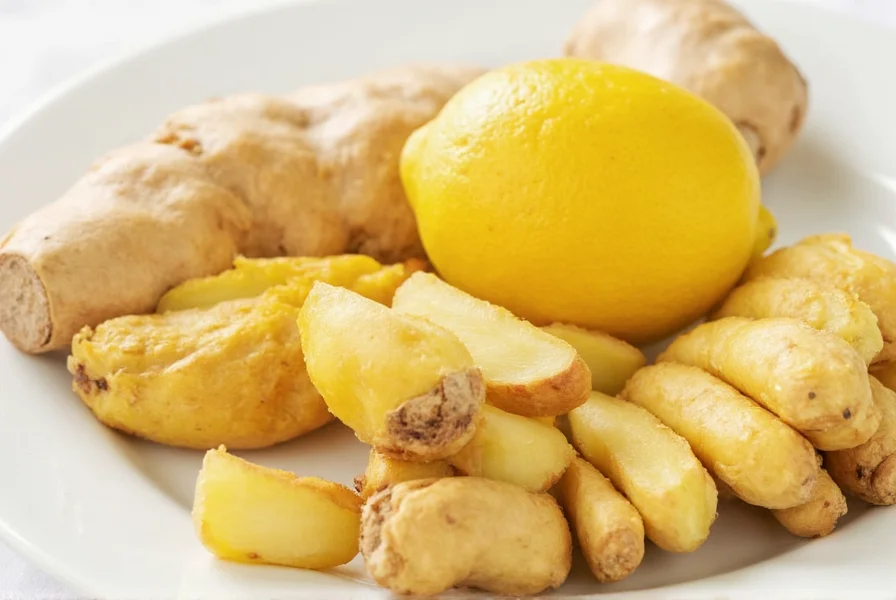Ginger has been used for over 5,000 years across Asian and Middle Eastern cultures for both culinary and medicinal purposes. This versatile rhizome contains more than 400 distinct biochemical compounds, with gingerols and shogaols representing its most pharmacologically active components. Modern research continues to validate many traditional uses while uncovering new potential applications for this remarkable botanical.
Understanding Ginger's Botanical Profile
Ginger belongs to the Zingiberaceae family, sharing relations with turmeric and cardamom. Unlike root vegetables, ginger develops as a rhizome—an underground stem that stores nutrients and enables propagation. The characteristic pungency comes primarily from gingerol, which transforms into zingerone and shogaols when heated or dried, altering both flavor profile and bioactive properties.

Nutritional Composition of Ginger
While consumed in relatively small quantities, ginger delivers notable nutritional value. A single tablespoon (6g) of raw ginger provides:
| Nutrient | Amount per Serving | Daily Value % |
|---|---|---|
| Calories | 5 | 0% |
| Carbohydrates | 1.3g | 0.5% |
| Dietary Fiber | 0.2g | 1% |
| Vitamin C | 0.5mg | 1% |
| Magnesium | 2.4mg | 1% |
| Potassium | 30mg | 1% |
Science-Backed Health Benefits of Ginger
Extensive clinical research supports several therapeutic applications of ginger. Unlike many herbal remedies with limited evidence, ginger demonstrates consistent results across multiple studies:
Digestive Health Enhancement
Ginger accelerates gastric emptying by approximately 25% according to research published in Nutrition Journal. This effect makes it particularly valuable for individuals experiencing functional dyspepsia. The mechanism involves ginger's ability to stimulate antral contractions while relaxing the pyloric valve, facilitating smoother digestion.
Nausea and Vomiting Relief
Multiple systematic reviews confirm ginger's effectiveness against various nausea types. A comprehensive analysis in Advances in Therapy found that 1-1.5 grams of ginger daily significantly reduced pregnancy-related nausea. Similarly, studies show ginger outperforms placebos for motion sickness and postoperative nausea, with effects comparable to conventional antiemetics but without drowsiness side effects.
Inflammation and Pain Management
Ginger's anti-inflammatory properties stem from its ability to inhibit cyclooxygenase and lipoxygenase pathways. Research in Arthritis & Rheumatism demonstrated that ginger extract reduced osteoarthritis pain by 30% compared to placebo. Athletes using ginger supplementation report 25-30% less muscle soreness after intense exercise, according to findings in the Journal of Pain.

Practical Applications of Ginger
Understanding how to maximize ginger's benefits requires knowledge of preparation methods that preserve its bioactive compounds:
Culinary Integration Techniques
Fresh ginger provides the highest gingerol content, but heating transforms these compounds into different bioactive forms. For maximum anti-nausea effects, consume raw or minimally processed ginger. When cooking, add ginger during the last 5-10 minutes of preparation to preserve volatile compounds. Pickled ginger maintains significant bioactive content while offering probiotic benefits from fermentation.
Optimal Consumption Methods
Research indicates that consuming ginger with black pepper increases absorption of its active compounds by up to 30% due to piperine's effect on metabolic enzymes. For digestive support, consume 1-2 grams of fresh ginger 30 minutes before meals. Nausea relief typically requires 250-500mg of powdered ginger taken at symptom onset.
Safety Considerations and Potential Interactions
Ginger demonstrates excellent safety when consumed in culinary amounts. However, therapeutic doses warrant consideration:
- May enhance blood-thinning medications like warfarin
- Could lower blood sugar levels when combined with diabetes medications
- High doses (over 4g daily) may cause heartburn or mouth irritation
- Generally considered safe during pregnancy at doses under 1g daily
Individuals with gallstone disease should consult healthcare providers before regular ginger consumption, as it may increase bile production. Those scheduled for surgery should discontinue high-dose ginger supplementation at least one week preoperatively due to potential bleeding risks.
Maximizing Ginger's Shelf Life and Potency
Proper storage significantly impacts ginger's bioactive compound retention. Whole, unpeeled ginger rhizomes maintain freshness for 2-3 weeks when stored in a paper bag in the refrigerator's vegetable drawer. For extended preservation, freeze ginger whole—frozen ginger retains 95% of its gingerol content for up to six months. Grated ginger should be used within 24 hours for maximum potency, as exposure to air accelerates compound degradation.
Conclusion: Integrating Ginger Into Daily Wellness
Ginger represents one of the most scientifically validated botanicals for everyday health support. Its dual role as both culinary staple and therapeutic agent makes it uniquely accessible. By understanding proper selection, preparation, and consumption methods, individuals can maximize the health benefits of this ancient remedy. Current research continues to explore ginger's potential applications in metabolic health, cognitive function, and immune support, suggesting even broader future applications for this versatile rhizome.
Frequently Asked Questions
What's the difference between fresh ginger and dried ginger powder?
Fresh ginger contains higher levels of gingerol, providing stronger anti-nausea effects. Dried ginger powder develops more shogaols through the drying process, which offer enhanced anti-inflammatory properties. One tablespoon of fresh grated ginger equals approximately 1/4 teaspoon of powdered ginger in potency.
How much ginger should I consume daily for health benefits?
For general wellness, 1-2 grams of fresh ginger daily provides significant benefits. Therapeutic doses for specific conditions range from 1.5-4 grams daily, typically divided into multiple doses. Consuming more than 4 grams daily may cause gastrointestinal discomfort in sensitive individuals.
Can ginger help with weight management?
Research suggests ginger may support weight management through multiple mechanisms: increasing thermogenesis by approximately 10%, improving insulin sensitivity, and reducing inflammation associated with obesity. A clinical trial in the journal Metabolism found participants consuming 2 grams of ginger powder daily experienced modest reductions in body weight and waist-to-hip ratio over 12 weeks.
Does ginger interact with common medications?
Ginger may interact with blood-thinning medications like warfarin by potentially enhancing their effects. It might also lower blood sugar levels when combined with diabetes medications. Individuals taking hypertension medications should monitor blood pressure, as ginger may have mild blood pressure-lowering effects. Always consult your healthcare provider before combining ginger with prescription medications.
What's the best way to prepare ginger for maximum health benefits?
For digestive benefits, chew a small piece of raw ginger or steep it in hot (not boiling) water for 5-10 minutes. To maximize anti-inflammatory compounds, lightly cook ginger for 5-10 minutes. Combining ginger with black pepper increases absorption of its active compounds. Avoid prolonged boiling, which degrades beneficial compounds, and store fresh ginger properly to maintain potency.











 浙公网安备
33010002000092号
浙公网安备
33010002000092号 浙B2-20120091-4
浙B2-20120091-4